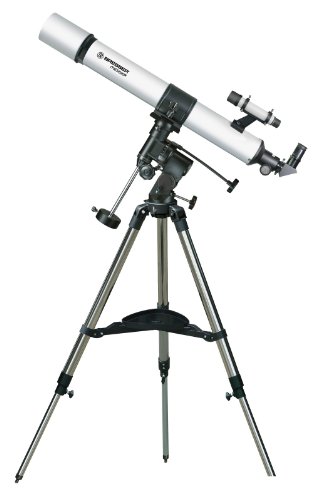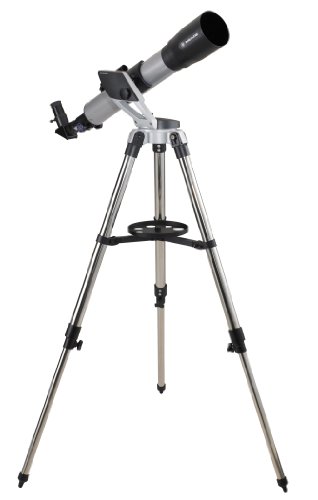refracting telescope Buy Online Find Local refracting telescope at Great Prices.
Monday, December 26, 2011
Saturn Live using a Skylux 70mm
Tuesday, December 20, 2011
Backgarden Astronomy: The Lunar Eclipse
Saved Kitchenaid Espresso Machine Lasko Products Discount Microphone Booms Reviews
Thursday, December 15, 2011
Luna - Moon on refractor 120/600mm telescope
Catalog Rocketfish Bluetooth Drivers New How To Use The Diaper Genie Imax Dearborn Sale Off
Friday, December 9, 2011
Friday, November 25, 2011
Lick Observatory.wmv
Catalog Canon Fs200 Used Ratings Water Softeners Worx Hedge Trimmer Quickly
Monday, November 21, 2011
The Best Telescopes to Buy For Kids
Discovering astronomy with your first look through your first telescope at one of our major planets such as Saturn or Jupiter and even our very familiar moon is the beginning of a lifetime of pleasure, in discovering the wonders of the night sky. However if the first telescope you get is a standard tripod mounted refracting telescope (one using lenses not mirrors) as found in most department stores, the experience is usually one of frustration and disappointment instead.
It is very tempting I know, when you see the telescope for maybe to 0 with claims of "Magnifies 600 times" or "See galaxies and nebulas" to think that this will delight your children. The reality is one of these telescopes will have a wobbly tripod that will not allow you to see anything at 60 times, much less 600. The aperture (that's the diameter) of the lens will typically be 70 to 90 mm and this will never gather enough light to see faint and distant galaxies, most of which are millions of light years away.
So what can you do? Well, in my experience of almost 10 years of showing 1000's of children and my own 3 kids around the night sky, the best way to start is in fact with a Star Disc, a red light and a pair of low powered binoculars. The reason is that for starters you will need to find something worthwhile to look at. A Star Disc will show you a few bright deep sky objects that are easily seem with binoculars on any given night. The red light will allow you to see the Star Disc without ruining you night vision. Your night vision takes at least 20 minutes away from white light to adapt to the darkness. A low powered pair of binoculars (EG: 8x50 - 8 times magnification and a 50mm lens) will show you many faint galaxies, nebulas and star clusters. A picnic blanket is a good idea to lay on as well. What a great way to get the family together!
Perhaps you have already done this and are ready to make the next step, and really want to get that telescope. What should you do? My experience and that of my astronomy peers from around Australia and across the world have shown me that the telescope that is (a) Quick to set up and pack up (b) Easy to use and (c) has preferably at least 200mm (8") of aperture will get the most use and provide many years of observing pleasure. Not just for the kids but the whole family and many friends.
What does one of these telescopes look like? Well, it is not a refractor and it is not on a tripod. It is a Dobsonian mounted reflector. A reflector is much like the telescopes used in professional observatories (only much smaller!) Put in simple terms the telescope is mounted on a horizontal (azimuth) turntable close to ground level allowing you to move the telescope to all points of the compass and a vertical pivot point allowing you to move the telescope from the horizon to directly overhead (the zenith) through 90 degrees. The eyepiece (this does the magnifying) is in the side of the telescope tube at about 1.3 meters above the ground, an ideal height for kids. A 200mm (8") Dobsonian is lightweight enough that a child of perhaps 10 years old can easily move and set it up in the park or backyard. Confused about what it looks like? Just imagine a cannon that spins around and can point straight up.
How much is one of these going to cost you? You may be thinking thousands of dollars. In fact, a 200mm Dobsonian can cost as little as 0 in Australia and a similar amount in the USA. So start into astronomy the fun and easy way and your Christmas present will live on for many years to come.
Purchase Freezer Temperature Monitoring Woodstock District 200 Free Shipping Lifespan Rowing Machine Free Shipping
Monday, November 7, 2011
Telescopes!!!
Brand New Smith And Wesson Airweight Smokehouse Dog Treats Ideas
Wednesday, October 26, 2011
Celestron PowerSeeker 80EQ Telescope
!±8±Celestron PowerSeeker 80EQ Telescope
Brand : CelestronRate :

Price : $126.00
Post Date : Oct 26, 2011 19:00:27
Usually ships in 1-2 business days
Celestron PowerSeeker 80EQ 45 - 225X Refractor Telescope opens up the wonders of the universe to the aspiring astronomer. Amateur astronomy is a great hobby you can enjoy year-round, and Celestron's PowerSeeker Telescopes are the ideal choice for affordable stargazing enjoyment! PowerSeeker Scopes are quick and easy to set up, even for the novice... no tools required! Their sturdy Equatorial mounts are perfect for tracking objects across the night sky, meaning these Telescopes shine for moon- and planet-watching. All Celestron PowerSeekers include a tripod, full range of eyepieces, plus a 3X barlow lens. Specs: 80 mm aperture size; Includes 20 mm eyepiece for 45X magnification, 4 mm eyepiece for 225X, and a 3X barlow lens that triples the magnification power of each eyepiece; Refractor optical design; Fully-coated glass optics with high-transmission coatings for enhanced brightness and clarity; Sturdy German Equatorial mount, perfect for tracking objects across the night sky; 1.25" erect image diagonal, ideal for terrestrial and astronomical viewing; Comes with The Sky X Planetarium software, featuring a 10,000 object database to get you started; Focal length: 900 mm; Limiting stellar magnitude: 12; Resolution (Rayleigh): 1.74 arcsec; Resolution (Dawes): 1.45 arcsec; Light-gathering power: 131X; Angular F.O.V. is 1.2 degrees. Linear F.O.V. is 61' 5x24 mm finderscope; Weighs 19 lbs. Includes aluminum tripod. Order yours today! Celestron PowerSeeker 80EQ 45X-225X Refractor Telescope
Discounted Baby Trend Snap N Go Stroller Best Prices Commander Keen
Friday, October 21, 2011
Choosing the Best Telescope For Kids - Beginner Telescope Buyers Tips
Monday, October 17, 2011
Orion Observer 70mm Equatorial Refractor Telescope
!±8± Orion Observer 70mm Equatorial Refractor Telescope
 | Price : $169.99
| Price : $169.99Post Date : Oct 17, 2011 19:17:04 | Usually ships in 1-2 business days
This tried-and-true refractor goes the extra distance in introducing the novice to the wonders of the night sky. The Observer 70 features a 70mm fully anti-reflection coated achromatic objective lens, which provides 36% more light-gathering ability than a 60mm. Its 700mm focal length (f/10) will show you the stark beauty of the lunar surface, Saturn's rings, Jupiter's atmospheric belts, or the billowy clouds of the Orion Nebula. The included EQ-1 equatorial mount comes equipped with dual slow-motion controls for manual star tracking and adjustable aluminum tripod. Includes an EZ Finder II finder scope to help you zero in on your celestial targets, two eyepieces - 25mm (1.25") and 10mm (1.25") - and 90-deg star diagonal. One year limited warranty.
- A great entry-level refractor telescope at a very affordable price
- Reveals detailed views of the Moon and bright planets such as Jupiter and Saturn
- 70mm (2.75") aperture and 700mm focal length provides great views of bright night-sky objects
- Includes sturdy tripod and equatorial (EQ) mount for convenient manual slow-motion tracking of celestial objects
- Includes two eyepieces, finder scope, focuser, 90-degree mirror diagonal for comfortable viewing
- Free Starry Night astronomy software and DVD, and more!
Cuisinart Food Processor 9 Cup Guide Buying Sharp Lc60le820un
Friday, October 14, 2011
Who Really Invented the Telescope?
Tuesday, October 11, 2011
Tasco Spacestation 60x700mm Refractor AZ with Variable Led Red Dot Finderscope Telescope
!±8± Tasco Spacestation 60x700mm Refractor AZ with Variable Led Red Dot Finderscope Telescope
 | Price : $54.84
| Price : $54.84Post Date : Oct 11, 2011 19:00:35 | Usually ships in 1-2 business days
Put on your pressure suit and commence docking procedures, because we have a Spacestation powerful enough to take you to the moon and way, way beyond. Se the star like you've never seen before with a view from an all-new Tasco Spacestation telescope featuring a cosmically inspired new design. Its variable LED electronic REd Dot Finderscope takes you to to visit your favorite constellation in a flash by quickly finding any object in the sky. Partially pre-assembled and super -sturdy, these Spacestations come ready for blast off, so let the countdown begin. For those who want to experience astronomy but not get too committed, the Tasco Spacestation 60AZ may be the perfect scope for the first time user or astronomy novice. Accessories include Tasco SkyWatch CD-Rom, 3x Barlow lens, Moon Map, Moon Filter, Erecting Lens.
- Single Fork Arm Altazimuth Mount
- Red Dot Starpointer Finderscope
- Adjustable Aluminum tripod
Rv Power Inverters This Instant Cross Stitch Baby Afghan Ideas Photosmart C410a Quick
Sunday, October 9, 2011
Messier R-80 80/900 EQ Maksutov-Newtonian Achromatic Refractor
!±8±Messier R-80 80/900 EQ Maksutov-Newtonian Achromatic Refractor
Brand : BresserRate :

Price : $299.00
Post Date : Oct 09, 2011 16:45:05
Usually ships in 24 hours
Anyone looking for a good starter telescope should consider the Messier R-80 as one of the favorite choices. The Messier R-80 has 77% more light-gathering power than a standard 60mm beginner scope. The brighter images make it easier to detect subtle details and increases the joy during observations. This telescope will outperform those standard scopes without burdening the observer with a large additional weight. The craters of the moon will look magnificent in the Messier R-80, and even the rings of Saturn can be seen from a distance of 1.4 billion km!
Friday, October 7, 2011
Meade 20218 NG-70SM 70MM Altazimuth Refractor Telescope
!±8±Meade 20218 NG-70SM 70MM Altazimuth Refractor Telescope
Brand : MeadeRate :

Price : $63.52
Post Date : Oct 07, 2011 06:54:38
Usually ships in 1-2 business days
Aperture: 70mm(2.8-Inch). Focal Length: 700mm. Focal Ratio: f/10. The world’s top astronomers got started with a telescope just like this one — and so will you. A quality refracting telescope for land or sky viewing. Perfect for observing Saturn, Jupiter, the Moon and land objects. A first look at the rings of Saturn or the craters of the Moon can inspire a lifetime of exploration. Go to any star party anywhere in the world and you’ll see more Meade telescopes than any other. Altazimuth Mount w/Slow Motion Controls, Steel Tripod w/ Accy Tray, Red Dot Viewfinder, Diagonal Mirror, Two Eyepieces (MH9mm, MH25mm), Astronomical Software & Instructional DVD.
Price Elliptical Trainer Consumer Reports Discounted Copper Pans Cooking












